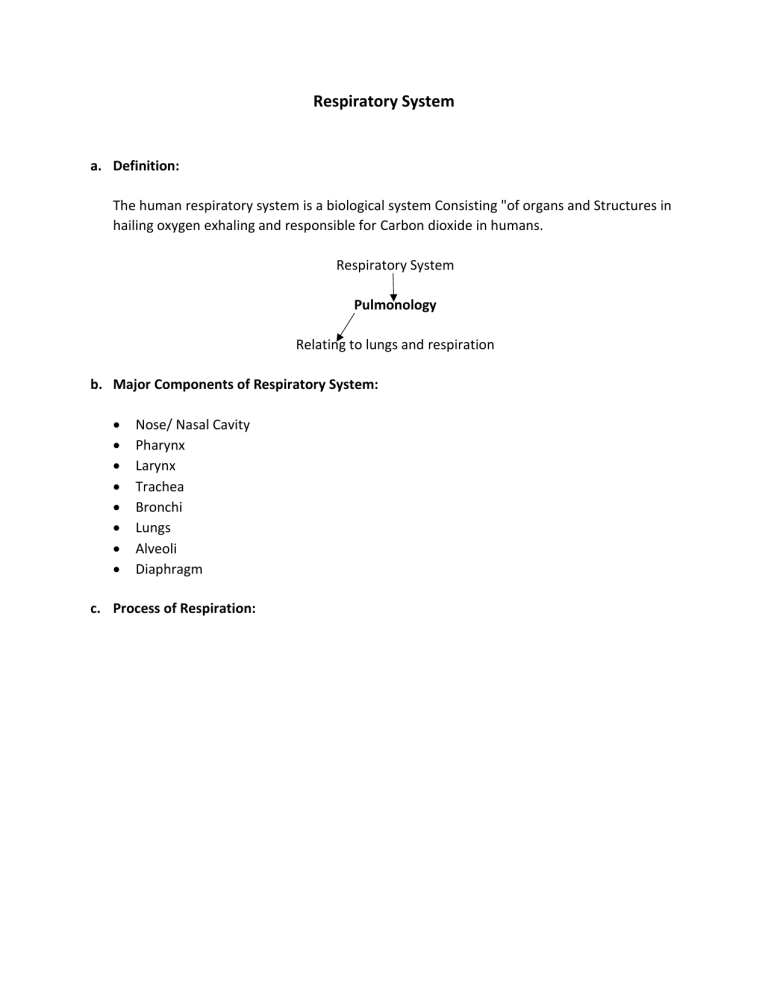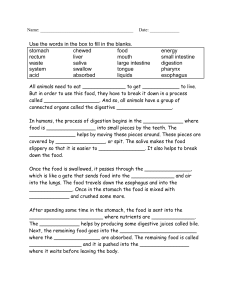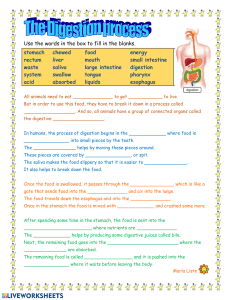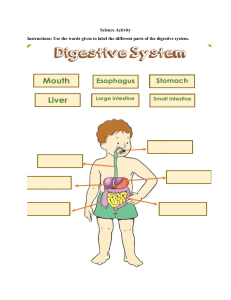
Respiratory System a. Definition: The human respiratory system is a biological system Consisting "of organs and Structures in hailing oxygen exhaling and responsible for Carbon dioxide in humans. Respiratory System Pulmonology Relating to lungs and respiration b. Major Components of Respiratory System: Nose/ Nasal Cavity Pharynx Larynx Trachea Bronchi Lungs Alveoli Diaphragm c. Process of Respiration: 1. In which part of the respiratory system gaseous exchange takes place? Alveoli. 2. Which of the following gas is released during the process of respiration? CO2. 3. The tiny air sacs present in human lungs is called? Alveoli. 4. Which of the following functions by filtering and keeping the mucus and dirt away from lungs? Cilia. 5. The total number of Alveoli present in human lungs is estimated to be around? 500 million. 6. The gaseous exchange between the external environment and lungs? External respiration. 7. The maximum volume of air contained in the lungs by full forced inhalation is? Total lungs capacity. 8. Larynx houses the vocal cord. 9. Larynx is an open organ made up of cartilage and connects the pharynx to the trachea. 10. Trachea Filters air we breathe. 11. And Others Fish cockroach Worm Whale Frogs Amphibians, mammals, birds Gills Trachea Skin Lungs Skin, lungs, buccal cavity Lungs 12. During respiration heat energy is formed. 13. Respiration in the presence of oxygen? Aerobic respiration. 14. Respiration in the Absence of oxygen? Anaerobic respiration. 15. Membrane that covers the lungs? Pleural membrane. 16. The part of brain that regulates the respiratory process? Medulla Oblongata. 17. The vital capacity of human lungs is equal to 4800ml. Digestive System a. Definition: The digestive system is a Complex series of organs and processes that work together to breakdown food into smaller absorbable components and facilitating the absorption of nutrients, water and minerals in to the body. Digestive System Gastro enterology Related to stomach Related to intestine b. Main Components of Digestive System: Mouth Pharynx Esophagus Stomach Small intestine Large intestine Anus c. Function of Digestive System: Its primary function is to provide the body with essential nutrients and energy required for growth, repair and overall functioning. d. Process of Digestion: Salivary glands Liver Stomach Pancreas The salivary glands are beated in and around the mouth. They secrete saliva, a fluid that contains enzymes, mucus and water. The main function of salivary glands is to moisten and soften the food, making it easier to chew and swallow. Liver is the largest internal organ in the body. It produces bile juice which is stored in gallbladder and release into the small intestine when needed. Its primary function is to aid in digestion and absorption of fats. Stomach secrets gastric juice which contains a very strong acid HCL. When the food enters the stomach, its muscles contract and mix the content with gastric juices, creating a semi liquid mixture called chyme. The pancreas is a glandular organ located behind the stomach. It produces digestive juices and insulin, as well as other hormones to do well digestion. Digestive juices also include pancreatic juice. 1. Which juice secreted by the organs in the alimentary canal plays an important role in digestion of fats? Bile juice, pancreatic juice. 2. Bile juice is stored in the liver and stored in Gallbladder. 3. Unused glucose is stored in the liver in the form of glycogen. 4. Saliva helps in digestion of starch. 5. Saliva contains 98% of water and it has enzyme amylase which is used in the digestion of carbohydrates. 6. In the buccal cavity of human beings, digestion of which of the following get started? Carbohydrates. 7. The digestion of fats begins in stomach. 8. The digestion of protein begins in the stomach and duodenum by the enzyme pepsin. 9. What is the role of mucus secreted by the stomach? To protect the lining of the stomach. 10. HCL converts the medium of food from alkali to acidic that also enables the pepsin to do its work. 11. Which is the longest organ of digestive system in human body? Small intestine. 12. Passage of food through small intestine usually takes three to six hours. 13. After digestion protein is converted into amino acid. 14. Dietary fibers are very much required in our daily food to help our body to get rid of undigested food. 15. How does the pH change from mouth to anus in digestive system? Alkaline to acidic. 16. Adult human stomach will secrete 1.5 liters of gastric acid daily. 17. Steps of digestive system: Ingestion Digestion Absorption Assimilation Elimination/Egestion Organ Mouth Stomach Small intestine (Released from pancreas) Gland Salivary gland Gastric gland Pancreas Enzyme Salivary amylase Pepsin i. Pancreatic amylase ii. Trypsin iii. Lipase Effect on nutrient Carbohydrates Proteins i. Starch ii. Proteins and peptones iii. Fats Nervous System a. Definition: The nervous system is a Complex network of nerves and cells (neurons) that carry message to and from the brain and Spinal cord to various parts of the body. b. Parts of Nervous System: 1. The bone structure skull that protects our brain is called? Cranium. 2. The average weight of male human brain is 1400 gram. 3. The brain is divided into how many parts? 3 parts (cerebrum, cerebellum, brainstem) 4. How many layers are there that protects our brain? 3 layers (arachnoid, pia mater dura mater) Meninges. 5. Which disease is caused due to infection or swelling in Meninges? Meningitis. 6. In human brain, memory power is controlled by Hippocampus. 7. The average weight of female human brain is 1200 gram. 8. The sensation of the sound persists in the Human brain for about 0.1 sec. 9. In human brain which part is responsible for the feeling of Hunger, trust, sleep? Hypothalamus. 10. Pituitary gland is located in which part of human body? Brain. 11. Nerve cells(neurons) conduct/spread information through? Electrical Impulse. 12. Which neuron is responsible for muscle movement? Motor Neuron. 13. Which is the main thinking part of human brain? Fore brain. 14. Which part controls the reflexes related to vision and the Hearing power in human body? Corpora. 15. Which is the most developed part of human brain? Cerebrum. 16. When the temperature of the body increases, Hypothalamus sends a signal to the sweat producing skin gland causing them to release water. 17. The olfactory reflectors in human brain detect. Smell 18. The human brain is mainly composed of neurons. 19. Which part of brain is known as little brain? Cerebellum. 20. Hypothalamus is responsible for which function? Sensory process. 21. Which is the smallest organ in human brain? Pineal gland.





